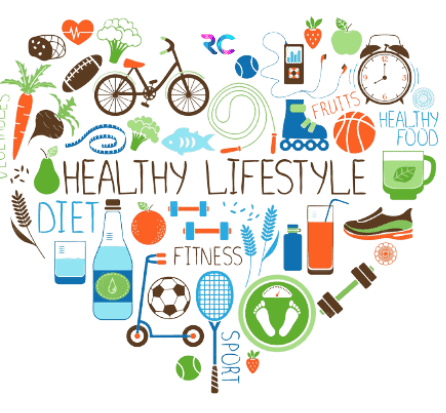
The circulatory system, often referred to as the cardiovascular system, is a complex network of blood vessels, the heart, and blood. It serves as the life-sustaining transportation system of the human body, ensuring that oxygen, nutrients, hormones, and waste products are efficiently delivered to and removed from cells. In this comprehensive article, we will explore the intricacies of the circulatory system, its components, functions, and the critical role it plays in maintaining overall health.
Anatomy of the Circulatory System
1. The Heart: The Pump of Life
The heart is the central organ of the circulatory system. It is a muscular, fist-sized organ located slightly left of the center of the chest. The heart’s primary function is to pump blood throughout the body. It consists of four chambers: two atria (upper chambers) and two ventricles (lower chambers). The right side of the heart receives deoxygenated blood from the body and pumps it to the lungs for oxygenation, while the left side receives oxygen-rich blood from the lungs and pumps it to the rest of the body.
2. Blood Vessels: The Body’s Highway
Blood vessels are a vast network of tubes that carry blood throughout the body. There are three main types:
- Arteries: These thick-walled vessels carry oxygenated blood away from the heart to various tissues and organs. The largest artery is the aorta, which originates from the left ventricle and distributes oxygen-rich blood to the entire body.
- Veins: Veins carry deoxygenated blood back to the heart. They have thinner walls than arteries and often contain one-way valves to prevent backflow. The superior and inferior vena cava are the major veins that return blood to the right atrium of the heart.
- Capillaries: Capillaries are tiny, thin-walled vessels that connect arteries and veins. They are the site of nutrient and gas exchange between the blood and surrounding tissues.
Functions of the Circulatory System
The circulatory system performs several vital functions:
1. Transportation of Oxygen and Nutrients
The system’s primary role is to deliver oxygen and essential nutrients, such as glucose and amino acids, to cells throughout the body. This process ensures that cells can perform their metabolic functions and produce energy.
2. Removal of Waste Products
The circulatory system also carries away waste products, including carbon dioxide and metabolic byproducts, from cells. These waste products are transported to organs like the lungs and kidneys for elimination.
3. Hormone Distribution
Hormones, the body’s chemical messengers, are transported through the bloodstream to target tissues and organs. This allows for communication and coordination of various physiological processes.
4. Temperature Regulation
Blood helps regulate body temperature by carrying heat away from active tissues and redistributing it to maintain a stable internal temperature.
5. Immune Response
The circulatory system plays a role in the immune response by transporting immune cells and antibodies to sites of infection or injury.
Blood: The Fluid of Life
Blood is the medium that flows through the circulatory system, carrying out its crucial functions. It is composed of several components:
- Red Blood Cells (RBCs): These cells, also known as erythrocytes, are responsible for transporting oxygen from the lungs to the body’s tissues and returning carbon dioxide to the lungs for exhalation.
- White Blood Cells (WBCs): WBCs, or leukocytes, are essential for the immune system’s defense against pathogens and foreign invaders.
- Platelets: Platelets are cell fragments that play a critical role in blood clotting and wound healing.
- Plasma: Plasma is the liquid portion of blood, consisting mainly of water, electrolytes, proteins, hormones, and waste products. It serves as a transport medium for cells and substances.
Circulation: The Journey of Blood
Blood circulates through the body in two main pathways:
- Systemic Circulation: Oxygenated blood is pumped by the left ventricle into the aorta, which branches into smaller arteries that deliver blood to all body tissues. After oxygen and nutrients are exchanged in the capillaries, deoxygenated blood returns to the heart through veins, eventually reaching the right atrium.
- Pulmonary Circulation: Deoxygenated blood from the right atrium is pumped into the pulmonary artery and sent to the lungs. In the lungs, oxygen is loaded onto red blood cells, and carbon dioxide is removed. Oxygenated blood returns to the left atrium via the pulmonary veins and is then pumped into the systemic circulation.
Maintaining Cardiovascular Health
Maintaining a healthy circulatory system is essential for overall well-being. Lifestyle factors, such as a balanced diet, regular physical activity, and avoidance of tobacco and excessive alcohol consumption, can promote cardiovascular health. Regular check-ups with a healthcare provider help monitor blood pressure, cholesterol levels, and other risk factors associated with heart disease.
Conclusion
The circulatory system is an intricate network responsible for transporting blood and essential substances throughout the body. It ensures that oxygen and nutrients reach cells while removing waste products. This complex system, with its central pump (the heart) and extensive network of blood vessels, is crucial for sustaining life and maintaining optimal health. Understanding its structure and functions underscores the significance of cardiovascular health in our lives.



